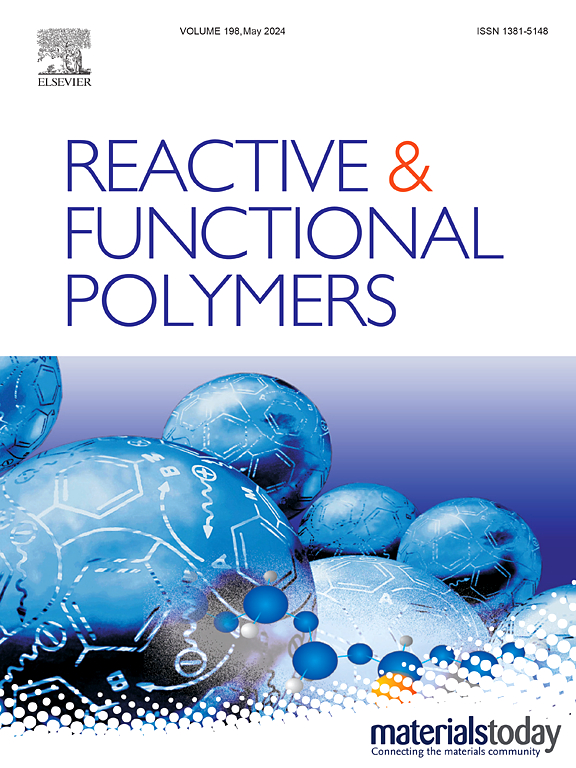Synthesis of acetylene-modified fluorene-based benzoxazine and toughening with hyperbranched benzoxazines
IF 4.5
3区 工程技术
Q1 CHEMISTRY, APPLIED
引用次数: 0
Abstract
A new fluorene-based benzoxazine (B-apa) was synthesized from 9, 9-bis (4-hydroxyphenyl) fluorine, polyformaldehyde, and 3-ethynylaniline in a green solvent (poly(ethylene glycol)) by Mannich condensation reaction. B-apa could be produced in yields up to 87.3 %. The cured sample features a high glass transition temperature (Tg) (366 °C) and superior char yield (Yc) of 63.3 %. To overcome the brittleness of the B-apa resin, hyperbranched benzoxazines (HB-AF) with flexible chains were employed for toughening modification. With the increase of HB-AF addition, differential scanning calorimeter (DSC) tests and curing kinetics showed a significant decrease in the curing enthalpy and activation energy of the copolymers, which facilitated the polymerization reaction. In addition, the flexural properties of the copolymers were greatly improved, especially for the copolymers containing 9 % HB, which was corroborated by the scanning electron microscope (SEM). The thermal stability of the copolymers did not decrease significantly, with Yc decreasing between 1 and 14 % and Tg decreasing only 3–23 °C. This study presents a strategy for synthesizing thermoset materials that exhibit high thermal stability while utilizing eco-friendly solvents. Additionally, it explores methods for toughening these materials without significantly compromising their thermal properties.

求助全文
约1分钟内获得全文
求助全文
来源期刊

Reactive & Functional Polymers
工程技术-高分子科学
CiteScore
8.90
自引率
5.90%
发文量
259
审稿时长
27 days
期刊介绍:
Reactive & Functional Polymers provides a forum to disseminate original ideas, concepts and developments in the science and technology of polymers with functional groups, which impart specific chemical reactivity or physical, chemical, structural, biological, and pharmacological functionality. The scope covers organic polymers, acting for instance as reagents, catalysts, templates, ion-exchangers, selective sorbents, chelating or antimicrobial agents, drug carriers, sensors, membranes, and hydrogels. This also includes reactive cross-linkable prepolymers and high-performance thermosetting polymers, natural or degradable polymers, conducting polymers, and porous polymers.
Original research articles must contain thorough molecular and material characterization data on synthesis of the above polymers in combination with their applications. Applications include but are not limited to catalysis, water or effluent treatment, separations and recovery, electronics and information storage, energy conversion, encapsulation, or adhesion.
 求助内容:
求助内容: 应助结果提醒方式:
应助结果提醒方式:


